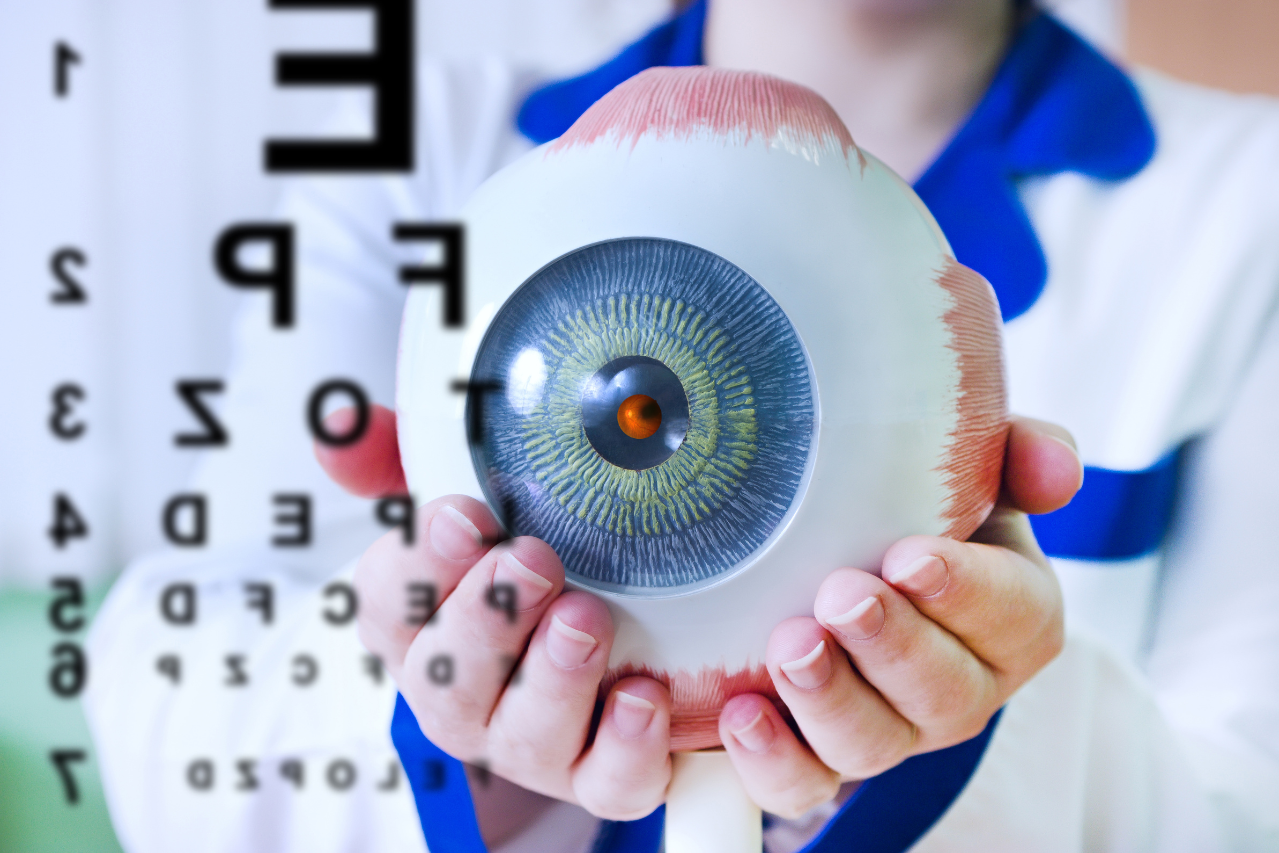In recent years, advances in mobile technology and artificial intelligence (AI) have revolutionized healthcare accessibility, opening new doors for ophthalmologic care—particularly in reaching underserved and vulnerable populations. This trend was at the forefront of a key session at the 2024 American Academy of Ophthalmology annual meeting in Chicago, where experts explored how these technological breakthroughs are reshaping glaucoma care for broader populations.
The session, co-hosted by Prevent Blindness, spotlighted the silent threat of glaucoma, a disease that often goes undetected but can cause irreversible blindness if untreated.
Dr. Eve J. Higginbotham, from the University of Pennsylvania, emphasized the urgent need to overcome barriers in glaucoma care access. With visual impairment on the rise globally, underserved regions face unique challenges due to resource constraints and limited medical infrastructure.
Glaucoma is particularly difficult to detect in its early stages, making proactive screening and care critical. Yet, despite insurance coverage in many regions, disparities remain in access to treatment due to factors like income inequality, health literacy, and geographic barriers.
Inequity in Access: A Persistent Challenge
Dr. Higginbotham highlighted the correlation between income inequality and visual impairment rates, revealing that states with higher poverty levels often report greater instances of untreated glaucoma. These inequities, coupled with a shortage of eye care professionals, create significant barriers for patients. Projections suggest that the current demand for eye care professionals will continue to outpace supply, particularly in areas with growing elderly populations. Leveraging telemedicine and triage technologies may help bridge this gap, offering scalable solutions to address workforce shortages.
Dr. Higginbotham emphasized the potential of emerging technology, noting, “By improving patient triage and expanding telemedicine capabilities, we can enhance remote assessments for visual acuity, visual fields, and intraocular pressure—critical metrics in glaucoma care.” Such innovations could drastically reduce the need for in-person visits, bringing essential services closer to patients, especially in remote and rural areas.
Enhancing Community-Based Care: The NYC-SIGHT Initiative
Dr. Lisa Hark from Columbia University presented findings from the Manhattan Vision Screening and Follow-up Study (NYC-SIGHT), an initiative aimed at increasing glaucoma detection and management in low-income neighborhoods in New York City. Supported by the CDC, the program was delayed by the pandemic but launched in 2021 with a focus on integrating telemedicine and community-based screenings. By partnering directly with housing developments, the initiative sought to bring eye care services directly to residents, using community rooms as makeshift clinics.

“Eye care access has traditionally been a challenge in these communities. We wanted to change that by bringing screenings into the buildings where people live,” Hark explained. The program revealed that 78% of initial screenings failed, indicating a high need for follow-up care.
By scheduling follow-up visits with optometrists within the community, they achieved an impressive 83% follow-up rate, a significant improvement over traditional models. When navigators assisted with scheduling, follow-through rates rose to 71.8%, compared to just 36.3% without their support.
The initiative was not only effective but cost-efficient. Each screening costs around $180.88, with $273.64 per diagnosed case. For patients receiving navigator assistance, adherence to follow-up visits was $24.25—$8.78 lower than those without navigator support. This cost-effective approach demonstrates that targeted community interventions, combined with telemedicine, can significantly impact glaucoma management within underserved areas.
The Role of Telemedicine in Proactive Glaucoma Screening
Dr. Barbara Marie Wirostko from the University of Utah discussed the role of telemedicine in transitioning ophthalmology from reactive to proactive care. Teleophthalmology enables early-stage detection and monitoring through remote services, making screening accessible to patients who might otherwise forego regular eye exams due to distance or financial constraints.
In a notable example, the UK launched a large-scale screening effort in 2011 that included over 1.7 million people with diabetes, utilizing fundus photography to detect early-stage glaucoma. Digital innovations, such as teleophthalmology and AI-driven image analysis, were shown to improve screening outcomes and streamline the identification of high-risk individuals.
Wirostko also cited the growing use of home monitoring devices, which allow patients to check their intraocular pressure at home (iCare HOME2 Tonometer), reducing the need for frequent clinic visits and helping to mitigate travel costs, missed work, and associated expenses.
“Telemedicine allows us to deliver care that is not only accessible but affordable,” Wirostko stated. A 2012 study found that telemedicine assessments cost less than traditional office visits, illustrating the cost savings these innovations can provide for both patients and healthcare systems. For those in rural or low-income communities, the integration of home-based equipment and satellite clinics could dramatically reduce barriers to care while supporting sustainability goals by cutting down on travel-related emissions.
Leveraging AI for Scalable Eye Care Solutions in Developing Regions
AI-powered solutions are becoming invaluable tools in eye care, particularly in low-resource settings. Nicolas Jaccard from Orbis International presented Cybersight AI, a platform designed to automate retinal image interpretation. Initially aimed at diabetic retinopathy, Cybersight AI is expanding to detect glaucoma as well. The platform trains non-medical staff to interpret retinal images, enabling broader screening coverage in regions with few trained ophthalmologists.
A recent study demonstrated that non-medical graders could match local expert performance in glaucoma detection after just five hours of training, dramatically expanding the potential workforce for glaucoma screening. By providing immediate referral recommendations, Cybersight AI has increased patient compliance with follow-up care—a crucial factor in managing progressive eye diseases.
“AI can match expert-level performance in eye disease detection with minimal training, which is a game-changer for regions lacking specialists,” Jaccard noted. However, ensuring that AI interpretations align with human expert assessments remains critical to maintaining accuracy and safety in diagnosis. Ongoing data collection and refinement of these algorithms are necessary to validate AI’s efficacy across diverse populations and settings.
A Blueprint for Eye Care in Low-Resource Countries
In India, where over 90% of primary open-angle glaucoma cases go undiagnosed, Dr. Anil K. Mandal from the LV Prasad Eye Institute has pioneered an approach to address this issue. With glaucoma as the third leading cause of blindness globally, the need for a structured care model is urgent, particularly in developing nations. The LV Prasad model follows a pyramidal approach, establishing a hierarchy of vision centers that provide different levels of care, from primary screenings to advanced diagnostic services.
This approach has proven effective in regions with populations up to 1.5 million, where permanent infrastructure and trained professionals are scarce. By deploying diagnostic technology, such as fundus photography and teleconsultation setups, LV Prasad’s network has provided essential services in rural and underserved areas, where timely interventions are critical for preserving vision. Mandal highlighted the replicability of this model for other low-resource countries, pointing to its success in establishing sustainable, community-integrated eye care.
The Path Forward: Broadening Access to Glaucoma Care
The session underscored the immense potential of digital health technologies and AI to democratize eye care. From cost-effective community screening models to AI-driven retinal imaging, these innovations present scalable, affordable solutions that could bridge access gaps globally. However, challenges remain. For instance, regulatory frameworks must adapt to new AI tools to ensure patient safety, while additional investment is needed to build infrastructure and train local professionals in high-need regions.
As AI and mobile technologies continue to evolve, their role in expanding ophthalmologic care will only grow. The 2024 American Academy of Ophthalmology meeting highlighted that through strategic partnerships, targeted community interventions, and robust digital tools, the future of eye care can be one that ensures no patient, regardless of socioeconomic background or geographic location, is left without access to essential vision services.
For those in the field, embracing a technology-forward approach is essential. Scaling successful models like NYC-SIGHT, leveraging telemedicine platforms, and investing in AI can help create a healthcare landscape where proactive, accessible eye care is the norm rather than the exception.
Are you interested in how AI is changing healthcare? Subscribe to our newsletter, “PulsePoint,” for updates, insights, and trends on AI innovations in healthcare.



